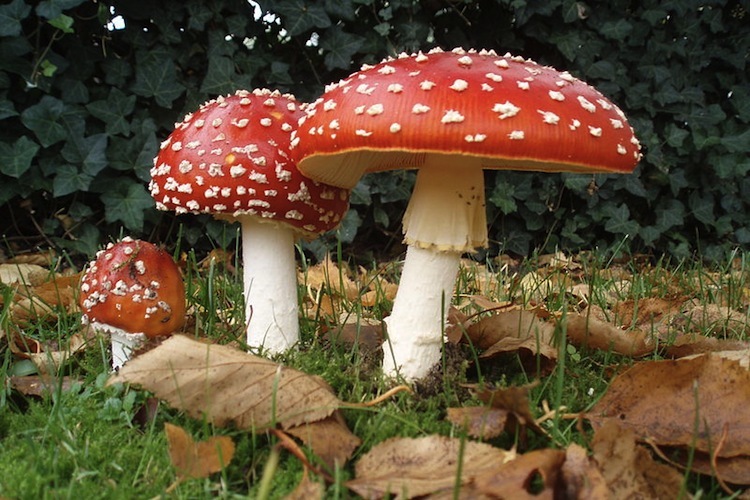
Toxin
A toxin is a naturally occurring organic poison[1] produced by metabolic activities of living cells or organisms.[2] They occur especially as proteins, often conjugated.[3] The term was first used by organic chemist Ludwig Brieger (1849–1919)[4] and is derived from the word "toxic".
This article is about naturally occurring organic poisons. For toxic substances that can be artificial or natural, see Toxicant.Toxins can be small molecules, peptides, or proteins that are capable of causing disease on contact with or absorption by body tissues interacting with biological macromolecules such as enzymes or cellular receptors. They vary greatly in their toxicity, ranging from usually minor (such as a bee sting) to potentially fatal even at extremely low doses (such as botulinum toxin).[5][6]
Toxins are often distinguished from other chemical agents strictly based on their biological origin.[7]
Less strict understandings embrace naturally occurring inorganic toxins, such as arsenic.[8][9][10] Other understandings embrace synthetic analogs of naturally occurring organic poisons as toxins,[11] and may[12] or may not[13] embrace naturally occurring inorganic poisons. It is important to confirm usage if a common understanding is critical.
Toxins are a subset of toxicants. The term toxicant is preferred when the poison is man-made and therefore artificial.[14] The human and scientific genetic assembly of a natural-based toxin should be considered a toxin as it is identical to its natural counterpart.[15] The debate is one of linguistic semantics.
The word toxin does not specify method of delivery (as opposed to venom, a toxin delivered via a bite, sting, etc.). Poison is a related but broader term that encompasses both toxins and toxicants; poisons may enter the body through any means - typically inhalation, ingestion, or skin absorption. Toxin, toxicant, and poison are often used interchangeably despite these subtle differences in definition. The term toxungen has also been proposed to refer to toxins that are delivered onto the body surface of another organism without an accompanying wound.[16]
A rather informal terminology of individual toxins relates them to the anatomical location where their effects are most notable:
On a broader scale, toxins may be classified as either exotoxins, excreted by an organism, or endotoxins, which are released mainly when bacteria are lysed.
The term "environmental toxin" can sometimes explicitly include synthetic contaminants[26] such as industrial pollutants and other artificially made toxic substances. As this contradicts most formal definitions of the term "toxin", it is important to confirm what the researcher means when encountering the term outside of microbiological contexts.
Environmental toxins from food chains that may be dangerous to human health include:
Research[edit]
In general, when scientists determine the amount of a substance that may be hazardous for humans, animals and/or the environment they determine the amount of the substance likely to trigger effects and if possible establish a safe level. In Europe, the European Food Safety Authority produced risk assessments for more than 4,000 substances in over 1,600 scientific opinions and they provide open access summaries of human health, animal health and ecological hazard assessments in their OpenFoodTox[37] database.[38][39] The OpenFoodTox database can be used to screen potential new foods for toxicity.[40]
The Toxicology and Environmental Health Information Program (TEHIP)[41] at the United States National Library of Medicine (NLM) maintains a comprehensive toxicology and environmental health web site that includes access to toxins-related resources produced by TEHIP and by other government agencies and organizations.[42] This web site includes links to databases, bibliographies, tutorials, and other scientific and consumer-oriented resources. TEHIP also is responsible for the Toxicology Data Network (TOXNET),[43] an integrated system of toxicology and environmental health databases that are available free of charge on the web.
TOXMAP is a Geographic Information System (GIS) that is part of TOXNET.[44] TOXMAP uses maps of the United States to help users visually explore data from the United States Environmental Protection Agency's (EPA) Toxics Release Inventory and Superfund Basic Research Programs.